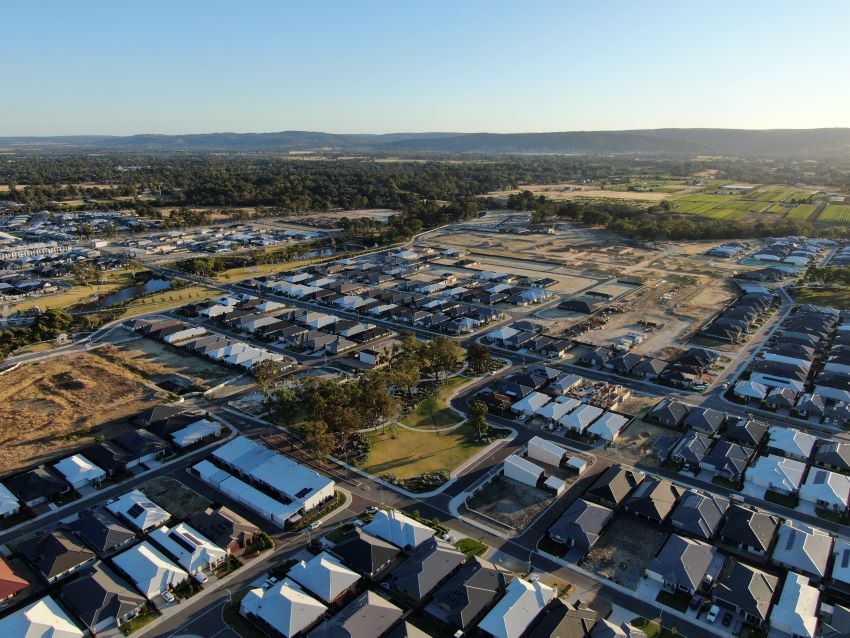News
The National Growth Areas Alliance, which represents over 5.3 million people living in new and recently established housing corridors across Australia, is providing clear recommendations to the Federal government on how to address the housing crisis in the upcoming budget.

State governments have been looking to meet their housing accord targets by increasing density, adding housing closer to existing jobs, services, and infrastructure in capital cities. However, this perspective overlooks the fact that growth areas remain a popular option for a large number of homebuyers. The population of Australia’s growth areas increased at an average rate of 2.9 percent per annum in the five year period from 2016 to 2021. In comparison, Australia’s population as a whole grew at 1.2 percent annually in the same period. This trend is only set to continue.
It's easy to understand why more Australians are choosing to move to outer suburban areas. Growth areas offer affordability, an abundance of green spaces, and vibrant, welcoming communities. In fact, over 5.3 million Australians, more than 20% of the country’s population, proudly choose to call these outer suburban havens ‘home’. It is crucial, therefore, that the government prioritise growth areas in this budget.
The NGAA Federal budget submission is based on a single idea: affordable living in growth areas, not just affordable housing. “People need more than a house,” states Bronwen Clark, CEO of the NGAA. “People moving to our communities also need access to jobs, education, transport infrastructure, health and other services.”
The recommendations included in the submission are straightforward. “Our recommendations to the Federal government are based on providing Australia with a holistic solution to the housing crisis that will stand the test of time,” states Clark. “We are thinking about what newly built communities will contribute to the nation in 50 years’ time and if we want to have well-functioning urban centres, we need to make the right decisions now”.
The recommendations in the submission to the Federal government’s budget include:
- Improve coordination between all levels of government
- Implement national settlement forecasting to inform housing targets
- Establish a national growth areas infrastructure fund aligned with housing delivery
- Develop a National Housing Strategy
- Support Resilient Communities
With this budget, the Government has an opportunity to demonstrate long-term strategic planning, free from political posturing and based on building a strong economic future. Growth area councils, NGAA members, are united by a shared vision of creating communities that are resilient, liveable, and thriving. “To make this vision a reality, all levels of government need to work together” states Cr Matthew Deeth, Chair of the NGAA and Deputy Mayor of western Sydney growth area Wollondilly Shire. “Local government has the expertise and local knowledge to deliver resilient communities. Including our perspective in the on-going housing discussion is critical. It is time to empower local government to be collaborative partners so we can work towards a prosperous future, together.”
The NGAA is the peak body for local governments in Australia’s outer metropolitan growth areas, advocating to state and federal governments in regards to growth area challenges and opportunities. The Alliance represents more than five million people living in Australia’s fast-growing suburbs, united by the shared experiences of population growth rates at double the national average and long-term under-investment in vital infrastructure.
More News
Game-Changer for Outer Suburbs: NGAA Celebrates Suburban University Study Hubs Announcement
28 . 11 . 2024 Read morePopulation Boom & Gloom: Infrastructure Funding Fails Fastest Growing Communities
22 . 11 . 2024Despite housing one in five Australians, Growth Areas face the worst levels of access to social infrastructure across metro areas.
Growth Areas will account for 59% of future population growth across all capital cities
National Growth Areas Alliance is launching its new infrastructure funding recommendations to support governments in meeting the needs of the 5.6 million Growth Area residents
Read more
Announcement from NGAA Chair Cr Deeth
26 . 09 . 2024Announcement from NGAA Chair Cr Deeth, Deputy Mayor Wollondilly Shire Council.
Read moreThe Case for a Unified Urban Policy: Insights from Bronwen Clark at UDIA WA
04 . 09 . 2024Recently our CEO, Bronwen Clark, was invited to speak at the Urban Development Institute of Australia Western Australia (UDIA WA) event in Perth. Themed A Shared Vision for Urban Growth in our Cities: Understanding the Draft National Urban Policy and What It Means for Perth, this event brought together 200 WA town planners and developers from the private and public sectors.
Read more
